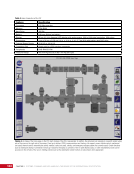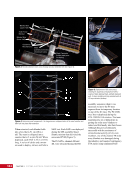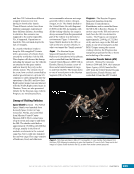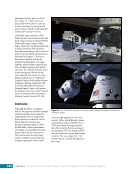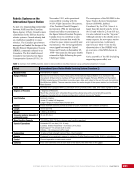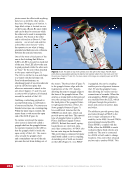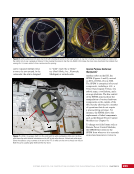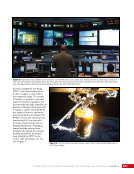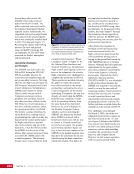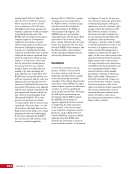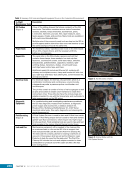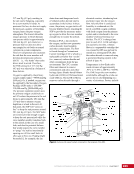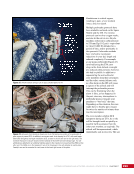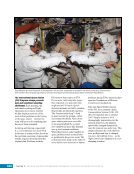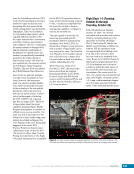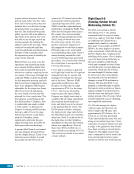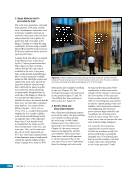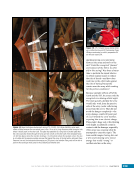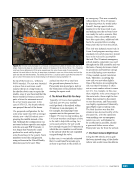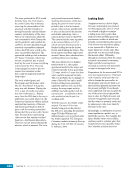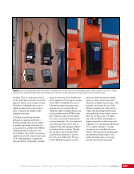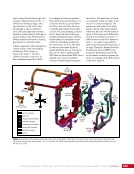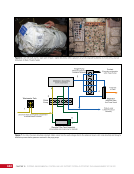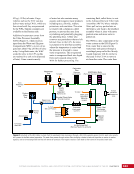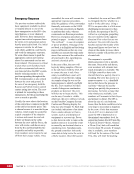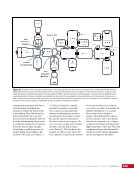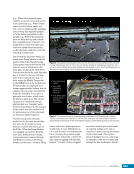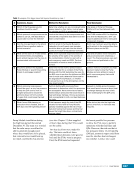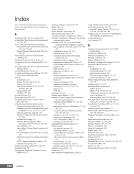CHAPTER 12 DAY IN THE LIFE: EMPTY HOUSE—DECREWING THE INTERNATIONAL SPACE STATION 216 failure and loss of power to half of the critical computers and cooling equipment on the ISS. A jumper could provide power from either MBSU 1 or MBSU 4 to these critical components. Additionally, critical power and computer equipment in both the Laboratory Module and Node 3 is nominally cooled by the Moderate Temperature Loop (MTL) of that module (see Chapter 11). In the event of an MTL leak during crewed operations, the crew would jumper critical equipment so that that it could be cooled by the Low Temperature Loop (LTL). For decrewing, half of the critical equipment would be preemptively jumpered to the LTL, meaning that a leak on either the MTL or the LTL would impact only half of the critical equipment. It is also important to note that in this jumpered configuration, the ground-controlled capability to integrate the MTL and LTL into a joined single loop is still possible therefore, failure of a single ITCS pump would not cause the loss of cooling to critical equipment. The team looked into multiple ways to maximize ground insight and command capabilities to the ISS. At the time of the Progress 44P accident, all commanding to the ISS was through the S-band systems or Russian Ground Sites (see Chapter 13). To provide additional redundancy, the team developed a way to connect the crew’s Portable Computer System (PCS) (see Chapter 5) commanding laptops to the ISS Joint Station Local Area Network (JSL). Once connected to the JSL, a flight controller would be able to remotely log into the PCS using the ISS Ku-band system and then send commands from the PCS. The ISS Ku-band system was later updated to provide standard commanding without the need to log into a PCS. As an interesting sidenote, when originally brainstorming ways to command through Ku-band, the team recommended using the humanoid robotic payload Robonaut to physically interface with a PCS on board. This would have required a lot of development in a short amount of time since Robonaut operations were in their infancy at the time. As it turned out, the remote log-in capability was easier to implement. Additionally, the JSL is the gateway to the Ku-band system therefore, ground control relies on an on- board laptop server. Nominally due to internet protocol and device identity limitations, only one laptop is configured as a server. If that server fails, the crew must deploy a new laptop. The JSL engineering and ops teams developed a way for a second laptop server to be deployed and powered in a standby, non-interference way. In this configuration, if the primary JSL server laptop failed, the PLug-in- plan UTilization Officer can easily configure the standby server to the primary role, thus restoring the JSL. Another hurdle in being able to operate the laptops from the ground is related to their power source. On-board laptops receive power from Utility Outlet Panels (UOPs) (see Chapter 5). If a UOP loses upstream power but is later recovered, it will not output power to downstream equipment without the crew physically cycling a switch on the UOP, much in the way a Ground Fault Circuit Interrupter works on many household electrical outlets. In a decrewed configuration, it was important that the PCS and JSL laptops that were acting as backup command capability could be repowered after a potential loss of upstream power. To offer this functionality, a UOP Bypass Jumper was installed to provide power directly from a Remote Power Control Module (see Chapter 9) to the laptops. This would allow the Station Power, Articulation, Thermal, and Analysis officer to remotely control power going to the laptops. Interestingly enough, the UOP Bypass Jumper was developed early in the life of the ISS when it was determined that the original electrical grounding safing function of the UOP did not work with the Robotics Work Station (see Chapter 15). Although the grounding issue was corrected, the UOP Bypass Jumper was retained on board in case of unexpected needs, such as decrewing the ISS. The crew is normally the on-scene eyes and ears of the flight control team. Video cameras or laptops with cameras were set up to supply overviews of each module, which would provide visual and auditory insight to the ISS during decrewed operations. The Communications Radio frequency Onboard Networks Utilization Specialist would then be able to cycle through available camera views to assist the flight control team in identifying off- nominal situations. This would be greatly beneficial in the event of a fire or rapid depress.
Purchased by unknown, nofirst nolast From: Scampersandbox (scampersandbox.tizrapublisher.com)








































































































































